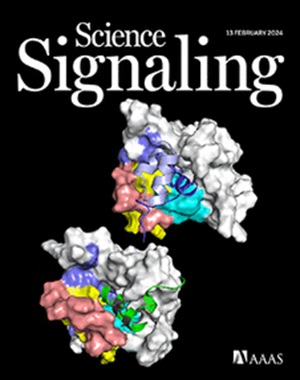Re-epithelialization of cancer cells increases autophagy and DNA damage: Implications for breast cancer dormancy and relapse
IF 6.6
1区 生物学
Q1 BIOCHEMISTRY & MOLECULAR BIOLOGY
引用次数: 0
Abstract
Cellular plasticity mediates tissue development as well as cancer growth and progression. In breast cancer, a shift to a more epithelial phenotype (epithelialization) underlies a state of reversible cell growth arrest called tumor dormancy, which enables drug resistance, tumor recurrence, and metastasis. Here, we explored the mechanisms driving epithelialization and dormancy in aggressive mesenchymal-like breast cancer cells in three-dimensional cultures. Overexpressing either of the epithelial lineage-associated transcription factors OVOL1 or OVOL2 suppressed cell proliferation and migration and promoted transition to an epithelial morphology. The expression of OVOL1 (and of OVOL2 to a lesser extent) was regulated by steroid hormones and growth factors and was more abundant in tumors than in normal mammary cells. An uncharacterized and indirect target of OVOL1/2, C1ORF116, exhibited genetic and epigenetic aberrations in breast tumors, and its expression correlated with poor prognosis in patients. We further found that C1ORF116 was an autophagy receptor that directed the degradation of antioxidant proteins, including thioredoxin. Through C1ORF116 and unidentified mediators, OVOL1 expression dysregulated both redox homeostasis (in association with increased ROS, decreased glutathione, and redistribution of the transcription factor NRF2) and DNA damage and repair (in association with increased DNA oxidation and double-strand breaks and an altered interplay among the kinases p38-MAPK, ATM, and others). Because these effects, as they accumulate in cells, can promote metastasis and dormancy escape, the findings suggest that OVOLs not only promote dormancy entry and maintenance in breast cancer but also may ultimately drive dormancy exit and tumor recurrence.
癌细胞的再上皮化增加自噬和DNA损伤:对乳腺癌休眠和复发的影响
细胞可塑性介导组织发育以及癌症的生长和进展。在乳腺癌中,向更上皮表型(上皮化)的转变是一种可逆的细胞生长停滞状态(称为肿瘤休眠)的基础,这使得耐药、肿瘤复发和转移成为可能。在这里,我们探索了三维培养中侵袭性间充质样乳腺癌细胞上皮化和休眠的机制。过表达上皮谱系相关转录因子OVOL1或OVOL2均可抑制细胞增殖和迁移,并促进向上皮形态的转变。OVOL1的表达(以及在较小程度上的OVOL2)受类固醇激素和生长因子的调节,并且在肿瘤中比在正常乳腺细胞中更丰富。OVOL1/2的一个未表征的间接靶点C1ORF116在乳腺肿瘤中表现出遗传和表观遗传畸变,其表达与患者预后不良相关。我们进一步发现,C1ORF116是一种自噬受体,指导抗氧化蛋白(包括硫氧还蛋白)的降解。通过C1ORF116和未知的介质,OVOL1表达失调了氧化还原稳态(与ROS增加、谷胱甘肽减少和转录因子NRF2的再分配有关)和DNA损伤和修复(与DNA氧化和双链断裂增加以及p38-MAPK、ATM等激酶之间相互作用的改变有关)。由于这些作用在细胞中积累,可以促进转移和休眠逃逸,因此研究结果表明,OVOLs不仅可以促进乳腺癌的休眠进入和维持,还可能最终推动休眠退出和肿瘤复发。
本文章由计算机程序翻译,如有差异,请以英文原文为准。
求助全文
约1分钟内获得全文
求助全文
来源期刊

Science Signaling
BIOCHEMISTRY & MOLECULAR BIOLOGY-CELL BIOLOGY
CiteScore
9.50
自引率
0.00%
发文量
148
审稿时长
3-8 weeks
期刊介绍:
"Science Signaling" is a reputable, peer-reviewed journal dedicated to the exploration of cell communication mechanisms, offering a comprehensive view of the intricate processes that govern cellular regulation. This journal, published weekly online by the American Association for the Advancement of Science (AAAS), is a go-to resource for the latest research in cell signaling and its various facets.
The journal's scope encompasses a broad range of topics, including the study of signaling networks, synthetic biology, systems biology, and the application of these findings in drug discovery. It also delves into the computational and modeling aspects of regulatory pathways, providing insights into how cells communicate and respond to their environment.
In addition to publishing full-length articles that report on groundbreaking research, "Science Signaling" also features reviews that synthesize current knowledge in the field, focus articles that highlight specific areas of interest, and editor-written highlights that draw attention to particularly significant studies. This mix of content ensures that the journal serves as a valuable resource for both researchers and professionals looking to stay abreast of the latest advancements in cell communication science.
 求助内容:
求助内容: 应助结果提醒方式:
应助结果提醒方式:


